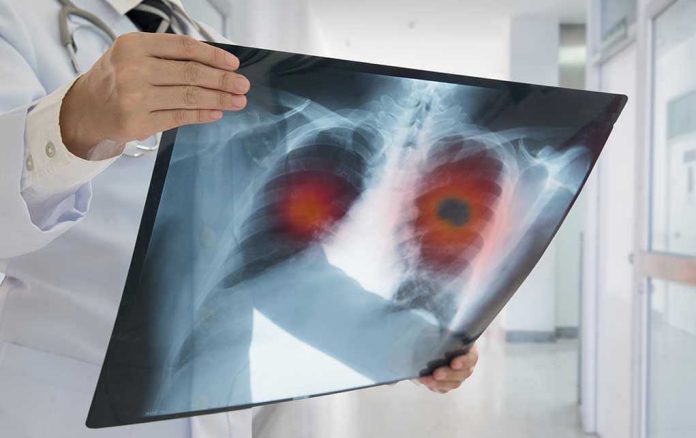
One in four people diagnosed with lung cancer today has never smoked a cigarette—yet their stories are rewriting everything we thought we knew about the world’s deadliest cancer.
At a Glance
- Up to 25% of lung cancer cases now strike people who have never smoked.
- Women, people of Asian descent, and those with a family history face the highest risk.
- Researchers are uncovering new genetic mutations and environmental triggers.
- Stigma is shifting as never-smoker lung cancer becomes a front-page medical puzzle.
The Smoking Gun That Wasn’t: The Surprising Rise of Never-Smoker Lung Cancer
For decades, the phrase “lung cancer” conjured up images of smoke-filled rooms, warning labels, and anti-tobacco campaigns. The public health message was clear—if you don’t smoke, you’re safe. But in recent years, a quarter of lung cancer patients have shattered that assumption. Imagine learning you have lung cancer, only to be met with disbelief from friends who say, “But you’ve never even touched a cigarette!” This new epidemic is rewriting the rulebook, and scientists are racing to keep up.
Lung cancer in never-smokers isn’t just a statistical blip. It’s a bona fide medical mystery, and it’s disproportionately targeting women, people of Asian descent, and those with a family history. Researchers at the National Institutes of Health and the Stanford Center for Asian Health Research and Education are zeroing in on what makes these groups uniquely vulnerable. Everything from genetic quirks to invisible environmental villains (think: radon, air pollution, and secondhand smoke) is under investigation. If you thought you could breathe easy because you never smoked, think again.
The New Faces of Lung Cancer: Who’s at Risk and Who’s Fighting Back?
The old stereotype of the chain-smoking patient is quickly being replaced. Today, clinicians and advocates report rising numbers of cases among people who never smoked a day in their lives. Women, especially Asian women, are at the epicenter of the trend. The Stanford Lung Cancer Summit made headlines in March 2025 by spotlighting these overlooked patients and calling for a new approach to research and screening. Meanwhile, ever-resourceful advocacy groups like the Lung Cancer Foundation of America are pushing to destigmatize the disease and raise the alarm: lung cancer can happen to anyone.
The power players in this story aren’t just scientists in lab coats. Patients and survivors are sharing their stories, reshaping the way clinical trials are designed, and demanding a seat at the table. Family members—once bystanders—are now decision-makers, advocating for more inclusive screening guidelines and culturally sensitive education campaigns. The days of blaming the victim are, thankfully, on the way out.
Inside the Science: What’s Causing Lung Cancer in Never-Smokers?
Researchers are making headway, but the culprit isn’t just one thing—it’s a tangled web of genetics and environment. A landmark NIH study published in July 2025 dissected the genomes of 871 never-smoker lung cancer patients, revealing that these cancers are often a different beast than those in smokers. Unique genetic mutations are popping up, and scientists are intent on turning these discoveries into targeted therapies. While the debate rages over whether air pollution, radon, or family history packs the biggest punch, everyone agrees that the old “smoke equals cancer” equation is outdated.
Clinicians are changing tactics, too. Screening guidelines, once reserved for heavy smokers, are starting to expand. New public health messaging warns that clean living isn’t a guarantee. And as pharmaceutical companies shift investment toward personalized treatments, healthcare systems are bracing for higher demand among never-smokers. There’s a silver lining: more research means more hope for early detection and survival, especially for those who never saw lung cancer coming.
Beyond the Smokescreen: Changing the Conversation and Saving Lives
This seismic shift isn’t just about medical journals or lab breakthroughs—it’s about real people and real lives. As news spreads, the stigma of lung cancer is finally cracking. No longer can anyone say, “You brought this on yourself.” Social attitudes are shifting, and so are the politics of healthcare. Policymakers now face tough questions about environmental regulations, funding priorities, and who should get screened. In the long term, the hope is that these changes will ripple out, saving lives and sparking broader reforms in cancer care.
The battle isn’t over, and there’s plenty left to discover. But one thing is certain: as researchers, patients, and families join forces, the world is waking up to a new reality—lung cancer is everyone’s concern, and everyone’s fight. The only thing more surprising than the numbers is just how quickly the story is changing.



